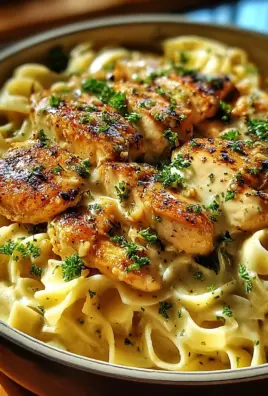Fried rice is a classic dish that is flavorful, easy to make, and highly customizable. Inspired by hibachi-style cooking, this homemade fried rice recipe is packed with buttery soy sauce flavor, fluffy rice, and crisp vegetables. It is the perfect dish to serve as a quick weeknight meal or as a side to complement other Asian-inspired dishes.

Why You’ll Love This Recipe
- Quick and easy: Ready in under 30 minutes with minimal prep.
- Better than takeout: Fresher ingredients and balanced flavors.
- Customizable: Add protein like chicken, shrimp, or tofu.
- Perfect for meal prep: Great for leftovers and reheating.
Preparation Phase & Tools to Use
Essential Tools and Equipment
Before cooking, gather the following tools:
- Wok or Large Skillet: A wok distributes heat evenly and prevents sticking. If using a skillet, ensure it is large enough to stir the ingredients freely.
- Spatula: A heat-resistant spatula helps toss the rice without breaking the grains.
- Cutting Board & Knife: Essential for prepping vegetables.
- Measuring Spoons & Cups: For precise seasoning measurements.
Importance of Each Tool
- A wok allows high-heat cooking, mimicking restaurant-style fried rice.
- A good spatula ensures even mixing and prevents rice from sticking.
- Prepping ingredients in separate bowls makes the cooking process smoother.
Preparation Tips for the Best Fried Rice
- Use cold rice: Freshly cooked rice is too moist and will turn mushy. Refrigerate rice for at least 1 hour or overnight.
- Have everything ready: Fried rice cooks quickly, so prep all ingredients in advance.
- Use high heat: This helps achieve the signature wok-fried texture.
Ingredients for Fried Rice
Main Ingredients:
- 4 cups cooked short-grain white rice (or jasmine rice)
- 1 egg, whisked/scrambled
- ½ cup chopped carrots (fresh or frozen)
- ½ cup peas (frozen recommended)
- ½ cup white onion, chopped
- 4 tablespoons unsalted butter, softened
- 2 tablespoons low-sodium soy sauce
- 2–3 tablespoons peanut, canola, or vegetable oil
- 2 teaspoons sesame oil (optional)
Ingredient Notes & Substitutions
- Rice: Short-grain rice creates a softer texture, while long-grain or jasmine rice is firmer and fluffier.
- Soy sauce: Low-sodium soy sauce prevents excessive saltiness. Adjust according to taste.
- Butter: Enhances the rich, savory flavor. Can be substituted with margarine or plant-based butter for a dairy-free version.
- Oil: Peanut oil adds authentic hibachi flavor, but vegetable or canola oil works well.
- Egg: Optional but adds texture and protein. Can be omitted for a vegan version.
Step-by-Step Directions
Step 1: Prepare the Rice
- Cook the rice according to package instructions.
- Spread the rice on a baking sheet and let it cool completely.
- Refrigerate the rice for at least 1 hour, preferably overnight.
Why This Step Matters
Cold rice prevents clumping and ensures a perfect fried rice texture.
Step 2: Soften the Butter & Mix with Soy Sauce
- Leave the butter on the counter to soften. If in a hurry, microwave in short intervals.
- Mash the butter with a fork, then mix in the soy sauce.
- It’s okay if the mixture does not combine completely.
Why This Step Matters
Pre-mixing butter and soy sauce ensures even distribution of flavor.
Step 3: Cook the Egg
- Heat a small splash of oil in a large skillet or wok over medium heat.
- Pour in the whisked egg and scramble it.
- Use a spatula to break the egg into small chunks.
- Remove from the skillet and set aside.
Tip: Avoid overcooking the egg. It should be soft and fluffy.
Step 4: Cook the Vegetables
- Add another splash of oil to the skillet.
- Add chopped carrots, peas, and onions.
- Sauté for about 4 minutes, stirring frequently.
- Season with a pinch of salt and pepper.
- Remove from the skillet and set aside with the scrambled egg.
Why This Step Matters
Cooking the vegetables separately prevents them from overcooking when combined with the rice.
Step 5: Fry the Rice
- Add another splash of oil to the skillet.
- Add the cold rice and toss every 30 seconds.
- Cook for 4–5 minutes, stirring frequently, until the rice is heated through and slightly golden.
Tip: Avoid stirring too much; letting the rice sit for a few seconds allows it to develop a slight crisp.
Step 6: Season the Rice
- Drizzle the butter-soy sauce mixture over the rice.
- Toss well to coat the grains evenly.
- Continue cooking until all visible white grains have absorbed the sauce.
Why This Step Matters
Adding the soy sauce mixture at this stage enhances the umami flavor without making the rice soggy.
Step 7: Combine Everything & Final Touches
- Return the cooked vegetables and scrambled egg to the skillet.
- Drizzle with sesame oil, if using.
- Stir everything together until evenly mixed.
- Taste and adjust seasoning with more soy sauce if needed.
Tip: For extra flavor, add a dash of garlic powder, white pepper, or oyster sauce.
Pro Tips & Recipe Variations
Pro Tips for Perfect Fried Rice
- Cold, dry rice is key. Freshly cooked rice will clump together and become mushy.
- Use a wok for best results. The high, sloped sides allow for easy stirring and even cooking.
- Keep the ingredients moving. Stir-frying requires constant tossing to prevent burning.
- Use high heat. This gives fried rice its signature slightly crispy texture.
Recipe Variations
- Protein Options: Add grilled chicken, shrimp, beef, or tofu.
- Spicy Version: Add sriracha or chili flakes for a kick.
- Healthier Alternative: Use brown rice or cauliflower rice.
- Garlic Butter Fried Rice: Add minced garlic to the butter mixture.
Best Ways to Serve Fried Rice
As a Main Dish
Fried rice can be a complete meal on its own, especially when loaded with vegetables and protein. Here are some ways to make it more filling:
- Add protein such as grilled chicken, shrimp, beef, pork, or tofu.
- Top with a fried egg for an extra layer of flavor.
- Drizzle with spicy mayo or sriracha for added heat.
As a Side Dish
Fried rice is commonly served as a side to complement other dishes. It pairs well with:
- Stir-fried vegetables
- Grilled or teriyaki-style meats
- Asian-inspired soups
Common Mistakes & How to Fix Them
Making fried rice seems simple, but small mistakes can lead to mushy, bland, or dry rice. Here are the most common errors and how to avoid them.
1. Using Freshly Cooked Rice
The Problem: Fresh rice is too moist, leading to clumps and a soggy texture.
How to Fix It: Always use cold, day-old rice. If you are short on time, spread freshly cooked rice on a tray and refrigerate for at least one hour.
2. Not Using Enough Oil
The Problem: Rice sticks to the pan and does not achieve a golden, slightly crispy texture.
How to Fix It: Use enough oil to coat the rice evenly. Peanut, vegetable, or canola oil work best for high-heat cooking.
3. Overloading the Pan
The Problem: Adding too many ingredients at once lowers the pan’s temperature, preventing proper frying.
How to Fix It: Cook in batches if needed. Keep the skillet hot and avoid overcrowding.
4. Skipping the Butter
The Problem: The dish lacks the rich, hibachi-style flavor.
How to Fix It: Always mix butter with soy sauce before adding it to the rice for an even distribution of flavor.
5. Not Cooking on High Heat
The Problem: The rice steams instead of frying, leading to a soft texture.
How to Fix It: Use medium-high to high heat and keep the ingredients moving to prevent burning.
6. Adding Too Much Soy Sauce at Once
The Problem: The rice becomes too salty and dark in color.
How to Fix It: Start with a small amount of soy sauce and taste before adding more. Using low-sodium soy sauce helps control salt levels.
7. Not Stirring the Rice Frequently Enough
The Problem: The rice burns or sticks to the pan.
How to Fix It: Stir every 30 seconds, allowing some grains to crisp up while preventing scorching.
8. Forgetting to Taste and Adjust Seasoning
The Problem: The fried rice lacks balance in flavor.
How to Fix It: Always taste before serving and adjust seasoning with soy sauce, sesame oil, or a pinch of salt.
Best Side Dishes for Fried Rice
Pairing fried rice with the right side dishes enhances the meal and creates a well-rounded dining experience. Here are eight excellent side dish options.
1. Hibachi-Style Grilled Chicken
Tender grilled chicken seasoned with soy sauce, garlic, and sesame oil pairs perfectly with fried rice.
2. Miso Soup
A light, umami-rich miso soup balances the rich flavors of fried rice. It is easy to prepare and adds warmth to the meal.
3. Japanese Ginger Salad
A refreshing salad with crisp lettuce, shredded carrots, and a tangy ginger dressing provides a crunchy contrast to fried rice.
4. Gyoza (Japanese Dumplings)
Pan-fried dumplings filled with pork, chicken, or vegetables make an excellent appetizer alongside fried rice.
5. Teriyaki Shrimp
Juicy shrimp glazed with teriyaki sauce adds a sweet and savory element to the meal.
6. Stir-Fried Vegetables
A simple mix of broccoli, bell peppers, and mushrooms sautéed in soy sauce complements the flavors of fried rice.
7. Tempura Shrimp or Vegetables
Crispy tempura pairs well with the soft and savory texture of fried rice. A light soy dipping sauce enhances the flavor.
8. Egg Drop Soup
A comforting and quick soup made with whisked eggs in a savory broth. It is a classic side for fried rice and helps round out the meal.
Storage & Reheating Instructions
How to Store Leftover Fried Rice
Fried rice can be stored in the refrigerator or freezer for later use.
- Refrigerator: Place leftover fried rice in an airtight container and store it in the refrigerator for up to 4 days.
- Freezer: To freeze, transfer the rice to a freezer-safe bag or container. Label it with the date and store it for up to 3 months.
Tips for Storing Fried Rice
- Allow the rice to cool completely before storing to prevent condensation, which can make the rice mushy.
- Store in small portions for easy reheating.
- If freezing, spread the rice on a baking sheet first to prevent clumping before transferring it to a container.
Best Ways to Reheat Fried Rice
Reheating fried rice properly prevents it from becoming dry or overly soft.
1. Reheating on the Stovetop (Best Method)
- Heat a large skillet or wok over medium-high heat.
- Add 1–2 teaspoons of oil and swirl to coat the pan.
- Add the leftover fried rice and stir-fry for 3–5 minutes, breaking up any clumps.
- If the rice seems dry, add a splash of water or soy sauce while stirring.
2. Reheating in the Microwave (Quickest Method)
- Place the rice in a microwave-safe bowl.
- Add a teaspoon of water to prevent drying out.
- Cover with a damp paper towel.
- Heat in 30-second intervals, stirring between each, until heated through.
3. Reheating in the Oven
- Preheat the oven to 300°F (150°C).
- Spread the rice evenly in an oven-safe dish.
- Cover with foil and bake for 10–15 minutes, stirring once halfway through.
Frequently Asked Questions (FAQs)
1. Can I use brown rice instead of white rice?
Yes. Brown rice adds more fiber and a slightly nuttier flavor. However, it has a firmer texture, so refrigerating it overnight is even more important to achieve the right consistency.
2. What’s the best way to add protein to this recipe?
You can add cooked chicken, shrimp, beef, pork, or tofu. Cook the protein separately, then mix it in when combining all the ingredients.
3. Why is my fried rice mushy?
Mushy fried rice is usually caused by using freshly cooked rice or too much moisture. Always use cold, day-old rice and avoid adding too much soy sauce or other liquids at once.
4. Can I make this recipe vegan?
Yes. Simply omit the egg and use plant-based butter or oil. You can also add tofu or extra vegetables for protein.
5. Is fried rice gluten-free?
Fried rice can be made gluten-free by using tamari or coconut aminos instead of soy sauce. Always check ingredient labels, as some soy sauces contain wheat.
6. What’s the best oil for fried rice?
Peanut oil is ideal for achieving an authentic hibachi-style flavor. Other good options include vegetable oil, canola oil, or sesame oil for added aroma.
7. How can I make fried rice spicier?
To add heat, mix in sriracha, red pepper flakes, or chili oil while frying the rice.
8. Can I freeze fried rice?
Yes. Allow the rice to cool completely before freezing. Store in an airtight container or freezer bag for up to three months. Reheat directly from frozen or thaw overnight in the refrigerator before reheating.
Conclusion
Homemade fried rice is a quick, flavorful, and versatile dish that is easy to make with a few key techniques. Using cold, day-old rice, cooking over high heat, and properly seasoning the dish ensures the best results.
This recipe is perfect for meal prep, easily customizable with different proteins and vegetables, and can be paired with a variety of side dishes. Whether served as a main course or a side, fried rice is a delicious addition to any meal.
Try experimenting with different ingredients and share your favorite variations. Once you master the basics, you can create your own signature fried rice recipe.
Fried Rice Recipe
Ingredients
- 4 cups cooked short-grain white rice long-grain or jasmine rice also works
- 1 egg whisked/scrambled
- 1/2 cup chopped carrots fresh or frozen
- 1/2 cup peas frozen recommended
- 1/2 cup white onion chopped
- 4 tablespoons unsalted butter softened
- 2 tablespoons low-sodium soy sauce
- 2 –3 tablespoons peanut canola, or vegetable oil
- 2 teaspoons sesame oil optional
Instructions
- Prepare the rice: Cook the rice according to the package instructions. Chill it in the refrigerator for at least 1 hour (preferably overnight) so it’s cold and firm for frying.
- Soften the butter: Leave the butter on the counter to soften. If in a hurry, microwave it in short intervals until soft. Mash the butter with a fork, then mix in the soy sauce. It’s fine if it doesn’t combine completely.
- Cook the egg: Heat a splash of oil in a large skillet or wok over medium heat. Add the whisked egg and scramble it. Use the tip of a spatula to break it into small chunks. Remove the egg from the skillet and set aside on a plate.
- Cook the veggies: Add another splash of oil to the skillet. Add the carrots, peas, and onion. Sauté for about 4 minutes, or until the veggies are tender and warmed through. Season with a pinch of salt and pepper. Remove the veggies from the skillet and place them on the same plate as the egg.
- Fry the rice: Add another splash of oil to the skillet, then add the cold, cooked rice. Toss every 30 seconds to warm it through and lightly brown it, cooking for 4-5 minutes. Adjust the heat to prevent burning.
- Season the rice: Drizzle the butter-soy sauce mixture over the rice, tossing to coat evenly. Cook until there are no more visible white grains of rice.
- Combine everything: Return the veggies and scrambled egg to the skillet. Drizzle with sesame oil, if using, and stir until everything is well combined. Taste and adjust seasoning with more soy sauce if desired. Serve immediately.
Notes
Veggies: Frozen peas and carrots are a convenient option and minimize prep time. You can also use fresh vegetables if preferred.
Soy sauce: Start with low-sodium soy sauce to avoid an overly salty dish. Add more to taste as needed.
Wok recommendation: A wok is ideal for this recipe, as it holds a large volume and distributes heat evenly. If using a skillet, choose the largest one you have and use plenty of oil to prevent sticking.
Keep ingredients moving: Continuously stir the rice and veggies in the skillet to prevent burning or sticking. Have all your ingredients prepped in small bowls for an easier cooking process.




Leave a Comment